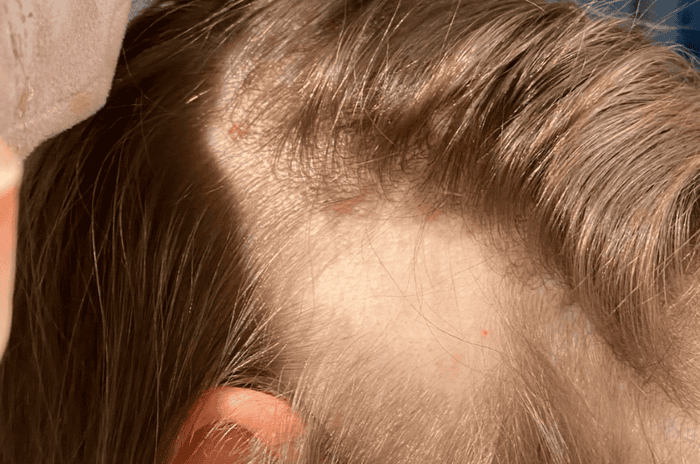Hair loss can have a profound emotional and psychological impact, especially when caused by autoimmune conditions like alopecia areata. For many individuals, the search for a long-lasting solution leads to advanced restoration procedures such as the Hair Transplant in Dubai. Situated in the heart of modern medical innovation, Dubai offers world-class hair restoration options that provide new hope for patients dealing with this unpredictable condition.
Understanding Alopecia Areata
Alopecia areata is an autoimmune disorder that causes the body’s immune system to mistakenly attack healthy hair follicles. This results in small, round patches of hair loss on the scalp or other parts of the body. In some cases, it can progress to complete baldness on the scalp (alopecia totalis) or even the entire body (alopecia universalis).
Unlike typical hair thinning or pattern baldness, alopecia areata does not follow a predictable pattern, which makes treatment more complex. The condition can appear suddenly, progress rapidly, and sometimes resolve spontaneously.
How Hair Transplant Works
A hair transplant involves transferring healthy hair follicles from a donor area—usually the back or sides of the scalp—to areas affected by hair loss. The procedure aims to restore natural hair growth and density. Two main methods are commonly used:
- FUE (Follicular Unit Extraction): Individual follicles are removed and implanted into the balding areas. This technique leaves minimal scarring and offers a natural result.
- FUT (Follicular Unit Transplantation): A small strip of scalp is removed, and hair follicles are harvested for transplantation. This method is ideal for larger areas requiring more grafts.
Both methods are effective for stable types of hair loss but may not be equally suitable for autoimmune-related conditions like alopecia areata.
Is Hair Transplant Suitable for Alopecia Areata Patients?
Hair transplant procedures are generally most successful in individuals whose hair loss is stable and not caused by ongoing immune activity. In alopecia areata, the immune system’s attack on hair follicles can persist or recur even after transplantation. This means that newly implanted grafts may also be affected, leading to potential regrowth failure.
However, in some cases—particularly when the condition has remained inactive for several years—a hair transplant may be considered. Specialists often recommend a waiting period of at least one to two years after the last active episode before undergoing the procedure.
Evaluating the Patient’s Condition
Before proceeding with a hair transplant, a comprehensive evaluation is essential. This includes:
- Medical History Review: Understanding the duration, frequency, and severity of alopecia episodes.
- Scalp Assessment: Checking for inflammation or scarring that may affect graft survival.
- Stability of the Condition: Confirming that the autoimmune activity is dormant.
- Donor Area Analysis: Ensuring that the donor site has healthy, unaffected hair follicles.
Only when these factors are favorable can the transplant be performed with a higher chance of long-term success.
Alternative Treatments Before Considering Surgery
Before opting for surgery, patients with alopecia areata may benefit from non-surgical treatments aimed at controlling immune activity and stimulating hair regrowth. These may include:
- Corticosteroid Injections: Help suppress the immune system locally and encourage regrowth in small patches.
- Topical Immunotherapy: Triggers a mild allergic reaction to restart hair growth.
- Minoxidil: A topical solution that supports new hair growth.
- PRP Therapy: Uses platelet-rich plasma from the patient’s own blood to strengthen follicles and enhance regrowth.
These options can help stabilize the condition and prepare the scalp for a possible future transplant.
Combining Hair Transplant with Regenerative Treatments
For patients whose alopecia has stabilized, combining a hair transplant with regenerative treatments may yield better outcomes. Therapies like PRP (Platelet-Rich Plasma) or stem cell-based treatments can boost follicle survival and enhance healing post-surgery. This integrated approach is becoming increasingly popular among specialists seeking to improve graft retention and hair density.
The Role of Modern Techniques
Today’s hair restoration technology has advanced tremendously. With refined graft extraction tools and precision implantation methods, surgeons can achieve highly natural results even in complex cases. Dubai’s aesthetic medicine sector leads in this innovation, offering safe, minimally invasive, and customized transplant procedures for patients worldwide.
Emotional and Psychological Benefits
Beyond restoring physical appearance, a successful transplant can significantly improve a patient’s confidence and emotional well-being. Many individuals with alopecia areata struggle with self-image and social anxiety due to visible hair loss. Restoring natural hair can help them feel more like themselves again, enhancing both mental and emotional health.
Conclusion
While a Hair Transplant can offer impressive results for many forms of hair loss, it may not be the first-line solution for active alopecia areata. The success of the procedure depends heavily on whether the condition has stabilized and whether the immune system is no longer attacking hair follicles. A thorough consultation with an experienced specialist is crucial to determine eligibility. For patients whose alopecia has entered remission, a carefully planned transplant—combined with ongoing medical support—can deliver excellent outcomes. As advanced technologies continue to evolve, the potential for successful restoration grows stronger than ever. Patients who explore the possibilities of Hair Transplant Dubai today have access to some of the most cutting-edge, personalized treatments available in modern medicine.






Comments